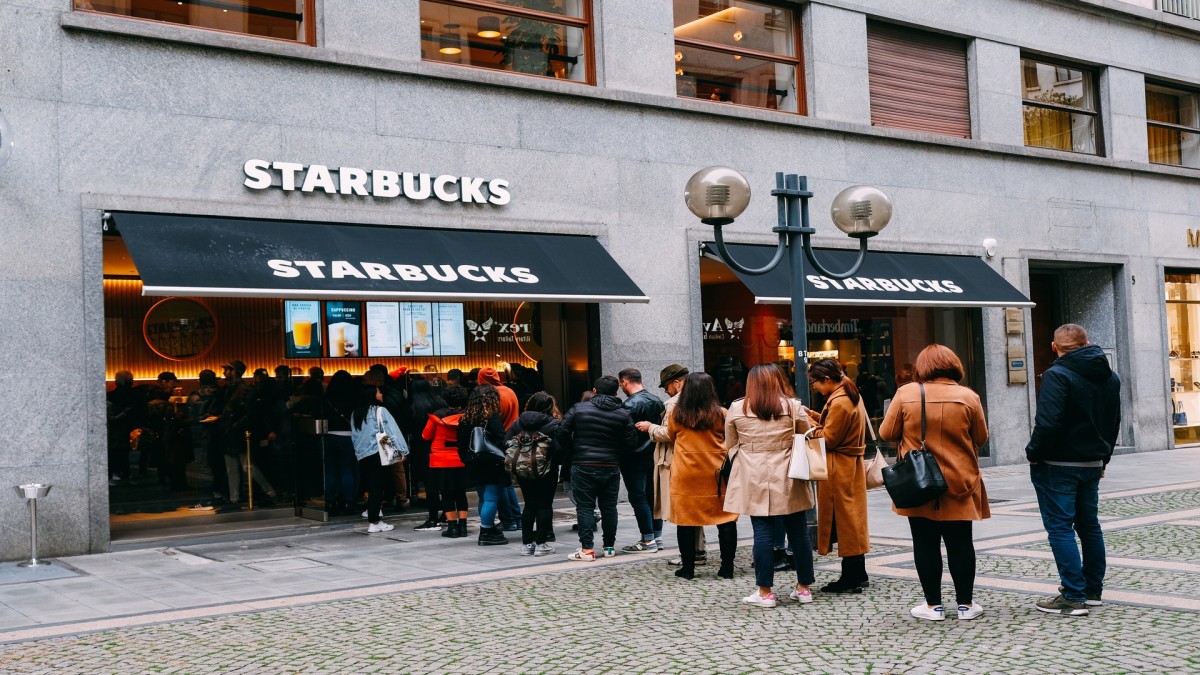Customers used to spend hours at Starbucks (SBUX) , but the time they spend in coffee shops these days is fast decreasing, and it isn’t helping matters for a coffee chain that is already facing fire on multiple fronts.
It used to be a familiar sight. A Starbucks lover would enter the nearest location, order a favorite brew, and would then take time to read the paper or chat with fellow customers, all while sipping on the latest quality creation coming from the star brand.
However, now the opposite is happening. According to Starbucks, customers cannot wait to take their coffee and head out. This transition from lingering to departing is central to a quiet rethinking of the coffee business.
Starbucks has begun testing a new shop prototype with fewer digital trappings and a more human appearance, as part of a larger effort to revive its signature “third place” vibe. In a society conditioned to tap, grab, and go, the coffee conglomerate is wagering that seats, warmth, and camaraderie remain important.
??Don’t miss the move: Subscribe to TheStreet’s free daily newsletter??
CEO Brian Niccol isn’t only cutting expenses and altering layouts. He’s indicating a more profound change — away from the chilly efficiency of mobile-only pickups and toward a future in which Starbucks cafés are intended to be destinations again. Places to gather, linger, and reconnect. Places that don’t simply provide coffee; they have a purpose. Ultimately, such a strategy will have a positive impact both as a brand and on the bottom line, he believes.

Image source: Shutterstock
Why Starbucks is rethinking the store experience
Starbucks isn’t just tweaking its store design—it’s responding to how people behave now.
With mobile orders and quick pickups on the rise, many customers see Starbucks as a stop, not a hangout; that café vibe? It’s fading.
Niccol wants to fix that. Instead of building new stores, Starbucks is refreshing 1,000 existing ones to feel warmer and more community-driven. Each “uplift” costs around $150,000.
Related: What Anthropic’s billion-dollar settlement reveals about AI’s future
Some of these new-look cafés are already live—like a 32-seat drive-thru in the Hamptons and a 10-seat spot coming to NYC.
More News:
- Jim Cramer flips the playbook on the S&P 500
- Qualcomm just made a massive leap into Tesla’s turf
- Cathie Wood goes biotech shopping, shells out $7.7 million
They’re cheaper to build, but designed to feel more human. That’s the bet.
Why Starbucks’ changes matter
This isn’t just a design refresh—it’s a $150 million bet on bringing warmth back to Starbucks.
Under CEO Brian Niccol, around 1,000 stores will get an “uplift” by the end of 2026, each costing about $150,000. That’s far less than the $800,000–$1 million Starbucks used to spend on full remodels. The goal now? Do more with less, and make cafés feel more inviting—not more automated.
Starbucks is also shutting down 80–90 mobile-order-only spots in 2026. Most are hidden in office buildings and feel too cold, too transactional. Niccol wants the personal touch back.
Related: Top Apple analyst reveals exclusive supplier for foldable iPhone and Vision Air in $6 billion pivot
Why the rush? Same-store sales have gone down for six quarters in a row. Starbucks hopes that consumers will come back and stay because of improved design and experience, not simply speed.
The global battle for ‘third place’ heats up
Starbucks isn’t the only firm changing its approach to returning to being the best coffee shop. In fact, it’s facing increasing competition from new global companies and budget-friendly ones.
Luckin Coffee (LKNCY) and Mixue, two Chinese competitors, are teaming up to take on Starbucks in its own country and throughout the globe. Luckin is recognized for its tech-driven, mobile-first convenience and low prices—often 30% lower than other places. The company has opened its first U.S. stores in New York City, where customers can order using an app.
Meanwhile, Mixue, the bubble tea giant, has passed Starbucks in China and throughout the world because it has more stores, low prices, fast product refreshes, and very few margins.
Starbucks is losing momentum in China’s expensive coffee market. Its market share has dropped from 34% in 2019 to just 14% in 2024, which is why it has slashed prices for the first time and is looking for partners that can help it adapt faster.
The hazards are genuine, even outside of Asia. Southeast Asian companies like Mixue are growing in regions where Starbucks used to be the king. They are using cheap prices and social media buzz to build devoted followings.
During this time, more artisanal competitors, like the Indonesian chain Kopi Kenangan and the Vietnamese-American brand 7 Leaves Cafe, are gaining ground by using local tastes and smart branding.
Related: Mark Zuckerberg drops $600 billion surprise at White House dinner
Starbucks has to stay ahead of the curve in the present climate. This current change in strategy is part of a bigger story.
#Starbucks #unveils #bold #plan #reverse #customer #behavior #shift